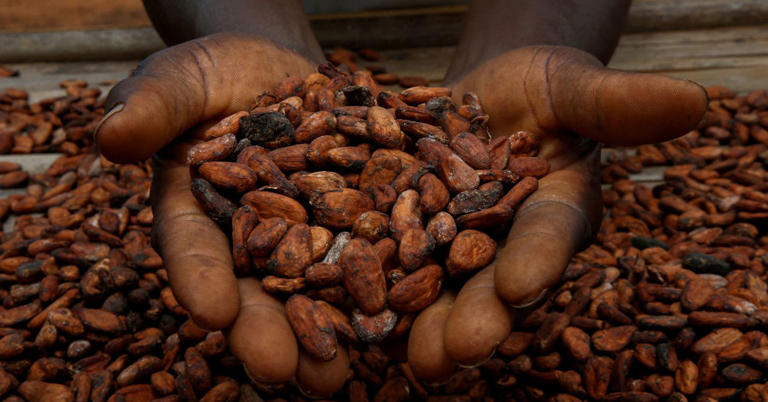Key Takeaways:
- Cocoa futures for May delivery hit an all-time intraday high of $10,080 per metric ton on Tuesday.
- Major chocolate companies employ hedging strategies to manage price volatility and avoid passing higher costs to consumers.
- Despite these efforts, consumers may soon feel the impact as West Africa grapples with systemic issues causing a significant supply deficit.
- Challenges such as disease, aging cocoa trees, and adverse weather conditions contribute to the supply shortage.
- Immediate solutions to address these challenges are not readily available, highlighting the vulnerability of global cocoa supply chains.
- Sustainable strategies are needed to stabilize cocoa prices and ensure long-term supply chain resilience.
The surge in cocoa prices, driven by the worst supply deficit in decades, is poised to have significant implications for consumers and chocolate manufacturers alike. As cocoa futures hit record highs, reaching $10,080 per metric ton, consumers may soon feel the impact of these soaring costs.
Large chocolate companies like Hershey have implemented hedging strategies to manage price volatility, but the industry’s ability to absorb these rising costs is limited. While companies were well-hedged last year, there’s only so much they can do to mitigate the effects of skyrocketing cocoa prices.
Consumers could start to see higher prices or “shrinkflation,” where chocolate bars become smaller to offset increased production costs. Additionally, companies may adjust their recipes to use less cocoa in some products, particularly in dark chocolate with its high cocoa content.
The cocoa market is grappling with systemic issues, including supply disruptions in key producing nations like Ivory Coast and Ghana, which account for a significant portion of global cocoa production. Factors such as black pod disease, swollen shoot virus, and aging cocoa trees have contributed to diminished yields.
Extreme weather events, such as heavy rains and the El Niño weather phenomenon, have further impacted crop yields, exacerbating the supply shortage. Additionally, farmers in Ivory Coast are transitioning to more lucrative crops like rubber, further straining cocoa production.
The recent surge in cocoa prices is driven not only by panic among commercial buyers but also by the magnitude of the supply deficit. Speculators initially fueled the rally last year by betting on higher prices, but many have since exited their positions to lock in profits.
For chocolate manufacturers like Hershey, the spike in cocoa prices has already taken a toll on earnings, with the company forecasting flat earnings for the year. Stock prices for chocolate giants like Hershey and Nestle have also seen declines over the past year in response to the challenging market conditions.
Overall, consumers should brace themselves for higher chocolate prices and potential changes in product sizes as the cocoa market grapples with unprecedented supply challenges.
